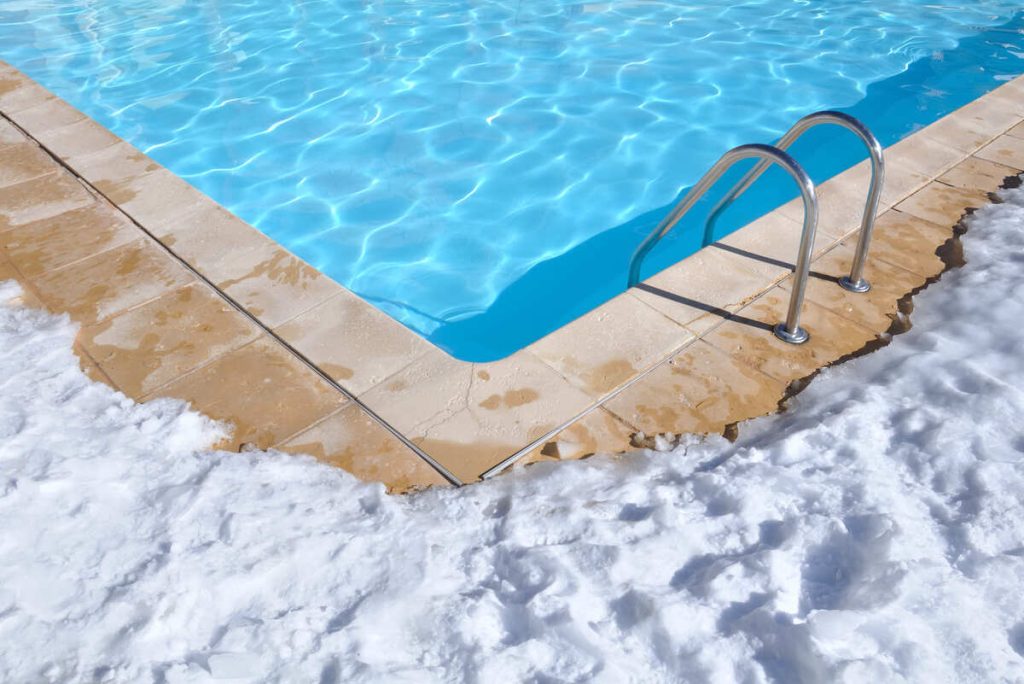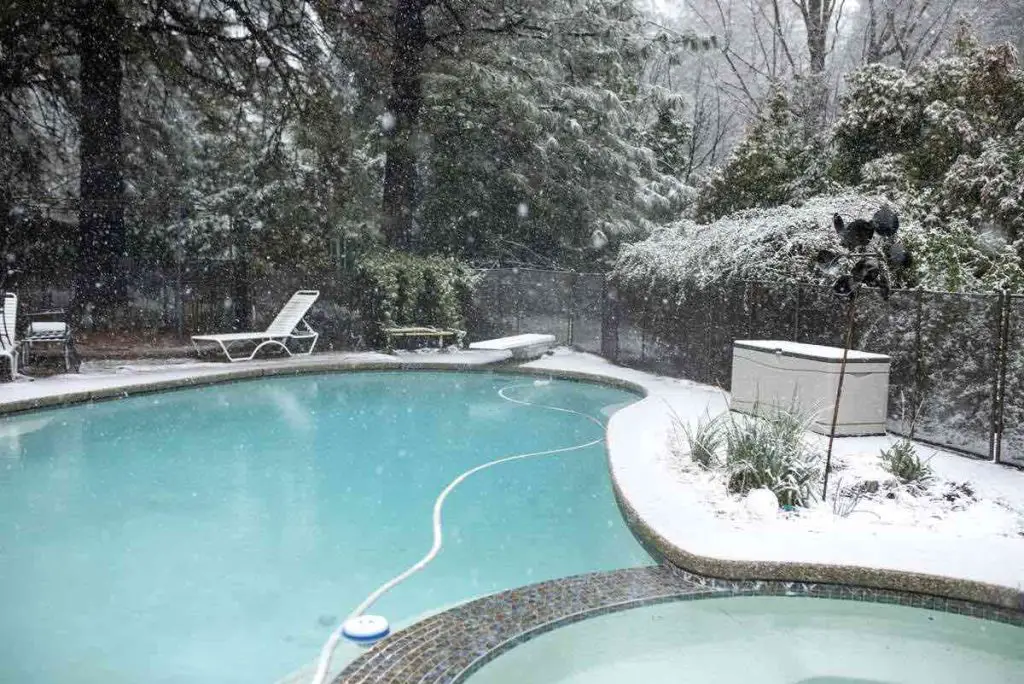It’s that time of year again! The weather is starting to warm up, and it’s time to start thinking about opening up the pool for the season. However, before you can enjoy a dip in the refreshing waters, you need to de-winterize your pool–but how much does it cost to de-winterize a pool?
De-winterizing a pool will cost you $250 to $500, depending on the type and size of your pool and the services you hire. An above-ground pool will cost you the least, as they require less work. In-ground pools will cost more since they include draining, vacuuming, and refilling the pool.
This comprehensive guide will explain everything you need to know about de-winterizing your pool, including cost factors and the processes involved. Read on to learn more!

Factors Affecting the Cost of De-Winterizing a Pool
The cost of de-winterizing a pool will vary from pool to pool, as a few factors can affect the price. These include:
Pool Type
The type of swimming pool you have will play a significant role in the cost of de-winterizing. Above-ground pools are typically the least expensive to de-winterize. This is because they are small and require less work to prepare for the swimming season. In-ground pools involve more steps, including draining, vacuuming, and refilling the pool, which adds to the overall cost.
Pool Size
Swimming pools come in all shapes and sizes, from small pools that can fit in your backyard to large ones that take up a sizable portion of your property. Larger pools will cost more to de-winterize as they require more chemicals, water, and time. Conversely, small pools involve less work, time, and materials, resulting in a lower cost.
Services You Hire
Not all pool de-winterization services are created equal. Some companies offer a comprehensive package that includes everything from draining and vacuuming the pool to adding chemicals and refilling it with water.
Other companies may only offer partial services, such as adding chemicals to the pool, leaving you to do the rest. The services you hire will affect the overall cost of de-winterizing your pool.
Location
The location of your pool can also play a role in the cost of de-winterizing. Pools in cold climates will require more work to prepare for the season as they may have frozen pipes or other damage.
You may need to hire a professional to thaw out your pipes or make repairs, which will add to the cost. However, pools in warmer climates will require less work and may not need any repairs, resulting in a lower price.
Processes Involved in De-Winterizing a Pool
De-winterizing a pool is a multi-step process that involves a few important tasks. It’s crucial to follow all the steps to avoid damaging your pool or causing problems with your pool’s filtration system. Here are the steps involved in de-winterizing a pool:
Inspect the Pool and Remove Dirt and Debris
The first step in de-winterizing a pool is to inspect it for any dirt or debris that may have accumulated over the winter months. Remove leaves, sticks, or other debris from the pool and its surroundings. Next, inspect the safety cover for any damage and ensure it’s in good condition.
Check the Equipment
Is everything in working order? Check the pump, filter, and other pool equipment to ensure it’s in good condition. Don’t attempt to repair any equipment, as this could void the warranty. If you notice any damage, contact your pool installation company or hire a professional to make the repairs.
Remove the Pool Cover
Carefully remove the pool cover and rinse it off with a hose. Be sure to remove any debris or dirt that may have accumulated on the cover. Set it out to dry before storing it away for the season. Follow the manufacturer’s instructions for removing and storing a retractable cover. Ensure it’s clean and in good condition before storing it away.
Raise the Water Level
When winterizing, you will have lowered the water level in your pool to below the skimmer. Now, you will need to raise the water level back up to the skimmer or waterline, typically 6″ to 18″ (15 to 45 cm).
This is important as it allows the skimmer to function properly and prevents damage to your pool’s pump. Use a hose to fill your pool until the water level is where it needs to be. This can take 1-2 hours, depending on the size of your pool.
Clean the Pool
Now that the pool is uncovered and the water level has been raised, it’s time to clean it. Use a brush to scrub the walls and floor of the pool, paying special attention to any areas that seem dirty or have algae growth.
Speaking of algae, the overall water is likely to be green from algae accumulation. You will almost always have to start by shocking the pool to kill the algae that is present in the water. If this is the case for you, check out my article on shocking your pool to winterize it so that you can save time and money the next time around!
Vacuum the pool to remove any dirt or debris that may have settled on the bottom. Be sure to clean out the skimmer and pump basket as well.
Install the Pool Equipment
Once the pool is clean, you can install any pool equipment that was removed for winter. This includes your pool’s pump, filter, and water heater. Follow the manufacturer’s instructions for installation to avoid any damage. Other equipment to install include:
- Ladder
- Diving board
- Water features
- Safety covers
Turn On the Pool Filter and Pump
With everything installed, it’s time to turn on the pool filter and pump. Be sure to check all the connections to ensure they are secure. Run the pump for 12 to 24 hours to circulate the water and remove any debris that may have gotten into the system. Don’t use the pool during this time. Neither should you add any chemicals to the pool.
Test the Water and Balance the Water Chemistry
The final step in de-winterizing a pool is to test the water and balance the water chemistry. This includes testing and adjusting your pool’s pH, alkalinity, and chlorine levels. I recommend using this test kit which you can get right off of Amazon.
To see why maintaining pool water chemistry is critical, check out my guide on Water Chemistry Basics.
Test the pH levels and chlorine levels using a pool test kit. Adjust the levels as needed to maintain a pH range of 7.2 to 7.8 and a chlorine level of 1 to 3 ppm (parts per million). Unbalanced water chemistry can damage your pool equipment and make swimming uncomfortable.

Final Thoughts
De-winterizing a pool is an integral part of pool maintenance. The cost to de-winterize a pool will vary depending on the type and size of the pool and the services you need. However, you can expect to spend anywhere from $250 to $500 to de-winterize a pool.
When hiring a professional to de-winterize your pool, compare quotes from multiple companies and read previous reviews to ensure you’re getting the best service possible.
